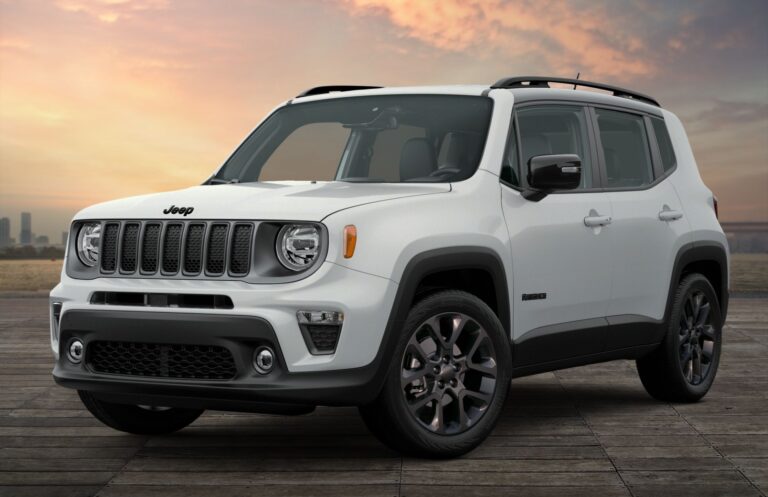Good Car Amplifier Brands: Powering Your Perfect Car Audio Experience
Good Car Amplifier Brands: Powering Your Perfect Car Audio Experience cars.truckstrend.com
The roar of an engine, the open road, and the perfect soundtrack – for many, this is the epitome of driving pleasure. While modern cars come equipped with increasingly sophisticated audio systems, they often fall short of delivering the true depth, clarity, and power that music enthusiasts crave. This is where a dedicated car amplifier steps in. Far from being just a device to make your music louder, a good car amplifier is the heart of any serious car audio setup, transforming mediocre sound into an immersive, high-fidelity experience. It provides the clean, stable power that your speakers need to reproduce every nuance of your music, from the crisp highs to the thunderous lows, without distortion.
Choosing the right amplifier, however, can be a daunting task given the myriad of brands, specifications, and technical jargon. This comprehensive guide aims to demystify the world of car amplifiers, highlighting the key factors to consider and, most importantly, shining a spotlight on the most reputable and reliable brands that consistently deliver exceptional performance and value.
Good Car Amplifier Brands: Powering Your Perfect Car Audio Experience
Why a Good Car Amplifier Matters Beyond Volume
Many people assume an amplifier simply makes things louder. While increased volume is a benefit, it’s a superficial one compared to the true advantages a quality amplifier offers:
- Unparalleled Clarity and Detail: Factory head units and their built-in amplifiers often lack the power to properly drive aftermarket speakers, leading to weak, muddy, or distorted sound at higher volumes. A dedicated amplifier provides clean, undistorted power, allowing your speakers to reproduce music with incredible clarity, revealing details you never knew existed in your favorite tracks.
- Dynamic Range: Music isn’t meant to be played at a constant volume. A good amplifier allows your system to handle the quietest whispers and the loudest crescendos with equal ease, preserving the dynamic range of the recording.
- Deeper, Tighter Bass: Subwoofers, in particular, demand significant power to produce deep, impactful bass. A powerful mono amplifier dedicated to your subwoofer ensures it can move enough air to create that chest-thumping low end without sounding boomy or uncontrolled.
- Protecting Your Speakers: When an amplifier is underpowered for the speakers it’s driving, it can "clip" the audio signal, sending distorted, square waves to your speakers. This clipping generates excessive heat in the speaker voice coils and is a primary cause of speaker damage. A properly matched, good quality amplifier provides sufficient clean power, extending the life of your speakers.
- Unlocking Speaker Potential: High-quality aftermarket speakers are designed to handle more power and reproduce sound more accurately. Without a dedicated amplifier, these speakers are severely underfed, and you’ll never experience their true potential.

Key Factors to Consider When Choosing an Amplifier
Before diving into specific brands, understanding the technical specifications is crucial for making an informed decision.
- Power (RMS vs. Peak): This is the most critical spec.
- RMS (Root Mean Square) Power: This is the continuous, real-world power output an amplifier can sustain without distortion. Always match the amplifier’s RMS output to your speakers’ RMS power handling.
- Peak Power: This is the maximum power an amplifier can produce for a very brief moment. It’s largely a marketing gimmick and should be ignored when matching components.
- Channels:
- Mono (1-channel): Designed specifically for subwoofers. Highly efficient (Class D).
- 2-Channel: Ideal for powering a pair of full-range speakers (front or rear).
- 4-Channel: Most common for powering a complete set of front and rear speakers.
- 5-Channel: A versatile option, providing four channels for full-range speakers and a dedicated mono channel for a subwoofer.
- Amplifier Class: Refers to the internal design and efficiency.
- Class A/B: Known for excellent sound quality, but less efficient, generating more heat. Good for full-range speakers.
- Class D: Highly efficient (often 80-90%), generating less heat and drawing less current. Ideal for subwoofers due to their high power demands, and increasingly popular for full-range applications due to technological advancements.
- Frequency Response: The range of frequencies the amplifier can reproduce. A wider range (e.g., 20 Hz – 20,000 Hz) is generally better.
- Signal-to-Noise Ratio (SNR): Measured in decibels (dB). A higher SNR (e.g., 100 dB) indicates less background hiss or noise, resulting in a cleaner sound.
- Total Harmonic Distortion (THD): Measured in percentage (%). A lower THD (e.g., <0.05%) indicates less distortion in the audio signal, leading to clearer sound.
- Input Sensitivity/Gain: Allows you to match the amplifier’s input to the output voltage of your head unit, preventing distortion. This is often misunderstood; it’s not a volume knob.
- Built-in Crossovers (HPF/LPF): High-Pass Filters (HPF) block low frequencies, sending only highs to full-range speakers. Low-Pass Filters (LPF) block high frequencies, sending only lows to subwoofers. Essential for proper system tuning.
- Bass Boost: Increases low frequencies, often at a specific frequency. Use sparingly to avoid distortion.
- Remote Bass Knob: Convenient for adjusting subwoofer level from the driver’s seat.
Top Car Amplifier Brands
When it comes to powering your car audio system, certain brands have consistently proven their mettle through innovation, reliability, and superior sound reproduction. Here’s a look at some of the most reputable names in the industry:
- Pioneer: A household name in car audio, Pioneer offers a wide range of amplifiers known for their reliability, excellent value, and user-friendly features. They cater to all budgets, from entry-level upgrades to more powerful systems, making them a safe and popular choice for many. Pioneer amps often deliver clean power and are a great all-around option.
- Kenwood: Another long-standing giant in car electronics, Kenwood amplifiers are celebrated for their robust build quality, solid performance, and competitive pricing. They often include useful features like variable crossovers and bass boost, providing a good balance of power and functionality for various setups.
- Alpine: Renowned for their premium sound quality and advanced features, Alpine amplifiers are a favorite among audiophiles. Their amps are engineered for clarity, detail, and impressive power delivery, often incorporating proprietary technologies for enhanced performance. While generally on the higher end of the price spectrum, they offer exceptional audio fidelity.
- JL Audio: A true powerhouse in car audio, JL Audio is synonymous with high-end performance, especially when it comes to bass. Their amplifiers, particularly the monoblock models, are known for their incredibly efficient power delivery, stability, and ability to drive even the most demanding subwoofers with authority and precision. JL Audio amps are built to last and deliver audiophile-grade sound.
- Rockford Fosgate: If raw power, durability, and a signature "punchy" sound are what you’re after, Rockford Fosgate is an excellent choice. They are celebrated for their robust, no-nonsense amplifiers that can take a beating and still deliver immense power, especially in the bass department. Their "Power" series amps are legendary for their over-engineered performance.
- Kicker: Known for their impactful bass and robust products, Kicker amplifiers are a popular choice for those looking to add significant low-end presence to their system. They offer a range of amplifiers that are powerful, reliable, and often more budget-friendly than some high-end competitors, making them a great option for enthusiasts.
- Hertz/Audison (Elettromedia Group): These Italian brands are at the forefront of high-fidelity car audio. Hertz and Audison amplifiers are engineered with a focus on sound quality, precision, and efficiency. They deliver incredibly clean, detailed, and warm sound, often incorporating advanced signal processing. They represent a significant investment but are a top choice for audiophiles seeking an uncompromised listening experience.
- Sundown Audio: For the extreme bass enthusiasts, Sundown Audio offers amplifiers that are designed for maximum power output and durability. These amps are often used in SPL (Sound Pressure Level) competitions and are known for their ability to deliver massive amounts of power for demanding subwoofer setups. They are typically niche and require careful system design.
- AudioControl: While also producing amplifiers, AudioControl is particularly renowned for its signal processors and line output converters. Their amplifiers often incorporate advanced processing capabilities, making them excellent for integrating with factory systems or for users who demand precise control over their audio signal. They focus on clean, high-fidelity sound.
Installation Tips and Best Practices
A great amplifier can only perform its best with proper installation.
- Professional Installation: While DIY is possible, a professional installer has the expertise, tools, and experience to ensure safe, reliable, and optimal performance, especially for complex systems.
- Proper Wiring:
- Power Wire: Use appropriate gauge wire (e.g., 4-gauge for ~1000W RMS) for the amplifier’s power demands. Too thin, and it can cause voltage drop and overheating.
- Ground Wire: A short, thick ground wire (same gauge as power) connected directly to a clean, bare metal point on the vehicle’s chassis is crucial to prevent noise.
- Fuse Protection: Install an inline fuse on the power wire, close to the battery, to protect against short circuits.
- Mounting Location: Choose a location that provides adequate ventilation (under a seat, in the trunk) to prevent overheating. Avoid mounting directly to carpet where heat can get trapped.
- Gain Setting: This is not a volume knob! Use a multimeter or oscilloscope to properly set the gain, matching the amplifier’s input sensitivity to your head unit’s output voltage. Improper gain setting is a leading cause of distortion and amplifier/speaker damage.
- System Matching: Ensure your amplifier’s RMS power output and impedance (Ohms) rating match your speakers’ specifications.
- RCA Cables: Use high-quality, shielded RCA cables to prevent noise interference.
Challenges and Solutions
Even with good brands, challenges can arise.
- Overheating:
- Cause: Improper impedance match, insufficient ventilation, prolonged high-volume use, inadequate wire gauge.
- Solution: Check speaker impedance, ensure proper airflow, consider a cooling fan, upgrade wiring.
- Noise/Hiss:
- Cause: Poor grounding, cheap RCA cables, ground loops, alternator whine.
- Solution: Verify ground connection, use shielded RCAs, install a ground loop isolator, address alternator issues.
- Power Drain:
- Cause: High-power amplifiers can strain a vehicle’s electrical system, especially with the engine off.
- Solution: Upgrade to a larger capacity battery or a high-output alternator for very powerful systems.
- Matching Components:
- Cause: Confusion between RMS and peak power, impedance mismatches.
- Solution: Always focus on RMS power. Ensure the amplifier’s stable impedance rating (e.g., 2-Ohm stable) matches the combined impedance of your speakers.
Practical Advice and Actionable Insights
- Define Your Budget: Car audio can be as expensive as you let it be. Set a realistic budget before you start shopping.
- Assess Your Current System: What kind of head unit do you have? What are your speakers’ RMS power ratings? This will dictate what kind of amplifier you need.
- Determine Your Audio Goals: Are you aiming for earth-shattering bass, crystal-clear vocals, or a balanced overall sound? This will influence the type and number of channels you need.
- Don’t Skimp on Wiring: High-quality wiring and proper installation are just as important as the amplifier itself.
- Read Reviews and Ask Questions: Look for independent reviews and consult with knowledgeable car audio enthusiasts or professionals.
- Consider a 5-Channel Amp: If you’re starting from scratch and want to power both full-range speakers and a subwoofer, a good 5-channel amplifier is often a cost-effective and space-saving solution.
Estimated Price Guide for Good Car Amplifier Brands
Please note that prices are highly variable based on power output, number of channels, features, and sales. These are estimated ranges for new amplifiers and should be used as a general guide.
| Brand | Typical Amplifier Type(s) | Estimated Price Range (USD) | Key Feature/Benefit |
|---|---|---|---|
| Pioneer | 2-Ch, 4-Ch, Mono, 5-Ch | $100 – $500 | Reliable, good value, solid performance for the price. |
| Kenwood | 2-Ch, 4-Ch, Mono, 5-Ch | $100 – $550 | Durable, feature-rich, competitive pricing. |
| Alpine | 2-Ch, 4-Ch, Mono, 5-Ch | $200 – $1200+ | Premium sound quality, advanced features, clean power. |
| JL Audio | Mono, 2-Ch, 4-Ch, 5-Ch | $300 – $1500+ | High-end audiophile performance, exceptional bass. |
| Rockford Fosgate | Mono, 2-Ch, 4-Ch, 5-Ch | $200 – $1000+ | Raw power, robust build, impactful bass. |
| Kicker | Mono, 2-Ch, 4-Ch, 5-Ch | $150 – $800 | Powerful bass, robust, good value for performance. |
| Hertz/Audison | 2-Ch, 4-Ch, Mono, 5-Ch | $400 – $2000+ | Top-tier sound fidelity, Italian engineering, precision. |
| Sundown Audio | Mono (primarily) | $300 – $2000+ | Extreme power output, built for SPL, very robust. |
| AudioControl | 2-Ch, 4-Ch, Mono (often w/ DSP) | $400 – $1500+ | Excellent signal processing, clean sound, OEM integration. |
Frequently Asked Questions (FAQ)
Q1: Do I really need an amplifier for my car audio system?
A1: If you want to experience your music with true clarity, detail, and dynamic range, especially at higher volumes, then yes, an amplifier is essential. Factory head units typically provide very low power (around 15-20 watts RMS per channel), which is insufficient to drive aftermarket speakers to their full potential without distortion.
Q2: Can I use an amplifier with my factory car radio?
A2: Yes, absolutely. Many amplifiers come with "high-level inputs" (speaker level inputs) that allow you to connect them directly to your factory radio’s speaker outputs. For optimal sound quality, using a line output converter (LOC) or an amplifier with built-in signal processing (like some AudioControl models) is recommended to convert the high-level signal to a clean low-level RCA signal.
Q3: What’s the difference between mono and multi-channel amplifiers?
A3: A mono amplifier (1-channel) is designed specifically for powering subwoofers. It’s optimized for low frequencies and high power output. Multi-channel amplifiers (2-channel, 4-channel, 5-channel) are designed to power full-range speakers (tweeters, mids, woofers). A 2-channel powers two speakers, a 4-channel powers four, and a 5-channel powers four full-range speakers plus one subwoofer.
Q4: How do I match an amplifier to my speakers?
A4: The most important factor is RMS power. Your amplifier’s RMS output should ideally match or be slightly higher than your speakers’ RMS power handling. Also, ensure the amplifier’s stable impedance (Ohm) rating matches the impedance of your speakers when wired. For example, if your speakers are 4-ohm, ensure your amp is stable at 4-ohms per channel. If you’re wiring multiple speakers to a single channel, calculate the combined impedance.
Q5: Where should I mount my car amplifier?
A5: Common mounting locations include under a seat, in the trunk, or on the back of the rear seat. The key considerations are:
- Ventilation: Ensure adequate airflow around the amplifier to prevent overheating.
- Security: Mount it securely to prevent movement during driving or accidents.
- Wiring Access: Ensure easy access for wiring connections and adjustments.
- Protection: Keep it away from potential water exposure or direct sunlight.
Q6: Why does my amplifier go into "protect mode"?
A6: "Protect mode" is a safety feature that shuts down the amplifier to prevent damage. Common reasons include:
- Overheating: Insufficient ventilation or prolonged high-volume use.
- Impedance Mismatch: Speakers wired at too low an impedance for the amp to handle.
- Short Circuit: A frayed speaker wire touching metal, or a short in the speaker itself.
- Low Voltage: Insufficient power from the car’s electrical system.
- DC Offset: An internal fault in the amplifier.
Always check your wiring, connections, and speaker impedance first.
Conclusion
A good car amplifier is not just an upgrade; it’s a fundamental component that unlocks the true potential of your car audio system. By providing clean, stable, and ample power, it transforms your listening experience from background noise to a captivating, immersive soundstage. While the technical specifications can seem overwhelming, focusing on key factors like RMS power, channel count, and amplifier class, alongside choosing from the reputable brands discussed, will guide you towards an excellent choice.
Whether you’re an audiophile seeking pristine clarity, a basshead craving thunderous lows, or simply someone who wants to enjoy their music more, investing in a quality amplifier from a trusted brand like Pioneer, Alpine, JL Audio, or Rockford Fosgate is a decision you won’t regret. With proper planning and installation, you’ll soon be enjoying your favorite tunes with a depth and vibrancy that a factory system simply cannot deliver, making every drive a concert on wheels.





